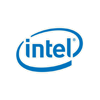
A brighter future: Intel's steps with TRIM

 TRIM commands are now a fully accepted and accepted garbage collection technology in the SSD industry. Unlike magnetic storage-based storage, NAND flash-based storage units cannot simply overwrite deleted data with new data (all say old cartridges).
TRIM commands are now a fully accepted and accepted garbage collection technology in the SSD industry. Unlike magnetic storage-based storage, NAND flash-based storage units cannot simply overwrite deleted data with new data (all say old cartridges).
In the case of NAND, this is solved by a multi-cycle process. A delete cycle runs first and then the new data can be written. Of course, this can not only have a detrimental effect on performance due to the many read-write cycles, but can also reduce the lifespan of our SSD, which of course no one wants.

The TRIM command allows the drive to label newly deleted data, then deletes the location data from the flash memory, and finally dynamically allocates space for the newly received data. This drastically reduces the write performance degradation for SSDs. Unfortunately, the TRIM commands for SSDs are partly RAID-level, which is currently unresolved, as RAID is an abstraction layer somewhere between the operating system and the physical disk.
If we can believe the information in the document released by Intel, the latest RST (Rapid Storage Technology) drive (11.5.0.1109) will introduce TRIM support to the RAID 0 level. That would open up a lot of opportunities for us. It now seems at least not “if” the problem, but “when”, so it’s definitely worth keeping an eye on the Intel Download Center for the fresh drive.
source: TechPowerUp













